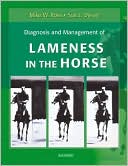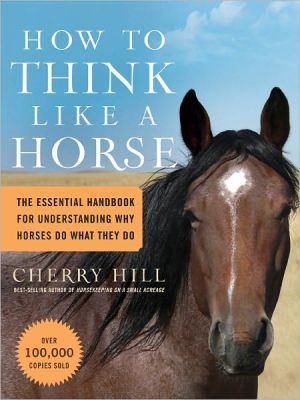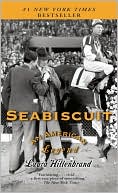Diagnosis and Management of Lameness in the Horse
Search in google:
Helping you to apply many different diagnostic tools, Diagnosis and Management of Lameness in the Horse, 2nd Edition explores both traditional treatments and alternative therapies for conditions that can cause gait abnormalities in horses. Written by an international team of authors led by Mike Ross and Sue Dyson, this resource describes equine sporting activities and specific lameness conditions in major sport horse types. It emphasizes accurate and systematic observation and clinical examination, with in-depth descriptions of diagnostic analgesia, radiography, ultrasonography, nuclear scintigraphy, magnetic resonance imaging, computed tomography, thermography, and surgical endoscopy. Broader in scope than any other book of its kind, this edition includes a companion website with 47 narrated video clips demonstrating common forelimb and hindlimb lameness as well as gait abnormalities.Cutting-edge information on diagnostic application for computed tomography and magnetic resonance imaging includes the most comprehensive section available on MRI in the live horse.Coverage of traditional treatment modalities also includes many aspects of alternative therapy, with a practical and realistic perspective on prognosis.An examination of the various types of horses used in sports describes the lameness conditions to which each horse type is particularly prone, as well as differences in prognosis.Guidelines on how to proceed when a diagnosis cannot easily be reached help you manage conditions when faced with the limitations of current diagnostic capabilities.Clinical examination and diagnostic analgesia are given a special emphasis.Practical, hands-on information covers a wide range of horse types from around the world.A global perspective is provided by a team of international authors, editors, and contributors. A full-color insert shows thermography images.Updated chapters include the most current information on topics such as MRI, foot pain, stem cell therapy, and shock wave treatment.Two new chapters include The Biomechanics of the Equine Limb and its Effect on Lameness and Clinical Use of Stem Cells, Marrow Components, and Other Growth Factors. The chapter on the hock has been expanded substantially, and the section on lameness associated with the foot has been completely rewritten to include state-of-the-art information based on what has been learned from MRI. Many new figures appear throughout the book.A companion website includes 47 narrated video clips of gait abnormalities, including typical common syndromes as well as rarer and atypical manifestations of lameness and neurological dysfunction, with commentary by author/editors Mike Ross and Sue Dyson.References on the companion website are linked to the original abstracts on PubMed. Doody Review Services Reviewer:Jonathan Hale Foreman, DVM, MS(University of Illinois College of Veterinary Medicine)Description:This book, intended as a comprehensive reference on equine lameness, is composed of 130 chapters by 115 different authors. There are 10 sections covering a variety of topics in equine lameness, including diagnosis, foot, forelimb, hindlimb, axial skeleton, developmental orthopedic disease, arthritis, soft tissues, therapeutics, and lameness in the sport horse. The last section is further divided into 31 chapters on various types of racing and non-racing performance horses and their type-specific lameness problems.Purpose:The authors' intent is "to provide a comprehensive, thought-provoking text, viewed from a global perspective, sometimes challenging long-held dogma." They purposely do not use the term "treatment" in the title, instead using "management" because they felt that many cases are not treated or cured as much as they are managed palliatively. The authors have been successful in meeting their initial objectives, enlisting "a broad cross-section of coauthors, with widely ranging experiences." They also intended to be "broad-minded" by including considerable detail on alternative therapies which are used daily in clinical practice despite the dearth of objective scientific data supporting their efficacy.Audience:The intended audience is veterinary practitioners, lameness diagnosticians, and veterinary surgeons. Veterinary students will also find the book useful, but it will prove unwieldy for lay persons. The authors are certainly credible authorities on the various topics, and they have provided a wide range of clinical experiences and viewpoints on lameness.Features:This book is the first book on lameness to be accompanied by a CD-ROM containing video and audio of various examples of lameness in horses. While the quality of the images is sometimes less than ideal, the CD-ROM proves an invaluable addition. To quote one preface written by a very experienced lameness diagnostician who has advised numerous Olympic riders and trainers, "the incorporation of a CD-ROM with moving pictures is so obvious it is surprising it has not been done before." The book is certainly all-encompassing, and is not one that can be read easily from cover-to-cover, but rather will serve for years as a ready source for reference for a particular condition or constellation of clinical signs.Assessment:This book is the most comprehensive, complete textbook available for equine lameness. The CD-ROM makes it a valuable tool for veterinary students. Practitioners may not use the CD-ROM as much, but will instead rely on the sections on therapeutics to be as up-to-date as possible on current therapies. The inclusion of the section on alternative therapies is to be applauded because they are rarely given such inclusive stature. The fact that equine clients rely so much on alternative therapies should not in itself serve as evidence of their efficacy, but rather demonstrates the depth of the desire of horse owners to make their horses sound, or less lame, regardless of cost or proven efficacy.
1Lameness Examination: Historical Perspective22Lameness in Horses: Basic Facts before Starting33Anamnesis (History)94Conformation and Lameness155Observation: Symmetry and Posture316Palpation427Movement608Manipulation749Applied Anatomy of the Musculoskeletal System8110Diagnostic Analgesia9311Neurological Examination and Neurological Conditions Causing Gait Deficits12412Unexplained Lameness13513Assessment of Acute-Onset, Severe Lameness14514The Swollen Limb15015Radiography and Radiology15316Ultrasonographic Evaluation of the Equine Limb: Technique16617Ultrasonographic Examination of Joints18918Ultrasound and Orthopedic (Non-Articular) Disease19419Nuclear Medicine19820Computed Tomography21321Magnetic Resonance Imaging21622Gait Analysis for the Quantification of Lameness22223Arthroscopic Examination22624Tenoscopy and Bursoscopy23025Thermography: Use in Lameness23626Clinical Investigation of Foot Pain24227The Foot and Shoeing250Foot Balance, Conformation, and Lameness250Horseshoes and Shoeing262Natural Balance Trimming and Shoeing271Hoof Reconstruction Materials and Glue-on Shoes27428Trauma to the Sole and Wall27529Functional Anatomy of the Palmar Aspect of the Foot28230Navicular Disease and Other Soft Tissue Causes of Palmar Foot Pain28631Treatment and Prognosis of Horses with Navicular Disease29932Fracture of the Navicular Bone30433Primary Lesions of the Deep Digital Flexor Tendon within the Hoof Capsule30534The Distal Phalanx and Distal Interphalangeal Joint310Primary Pain Associated with the Distal Interphalangeal Joint310Fractures and Fragmentation of the Extensor Process of the Distal Phalanx316Osseous Cyst-Like Lesions in the Distal Phalanx317Keratomas, Neoplastic, and Non-Neoplastic Space-Occupying Lesions in the Hoof317Fractures of the Distal Phalanx318Pedal Osteitis: Does It Exist?321Osteitis of the Palmar Processes of the Distal Phalanx322Disease of the Cartilages of the Foot32335Laminitis325Pathophysiology of Laminitis325Diagnosis of Laminitis329Medical Therapy of Laminitis329Hoof Care of a Laminitis Horse332Deep Digital Flexor Tenotomy for Managing Laminitis335Other Management Aspects of Laminitis33836The Proximal and Middle Phalanges and Proximal Interphalangeal Joint34237The Metacarpophalangeal Joint34838The Metacarpal Region36239The Carpus37640The Antebrachium39441The Elbow, Brachium, and Shoulder39942The Hind Foot and Pastern41843The Metatarsophalangeal Joint42144The Metatarsal Region43345The Tarsus44046The Crus45047The Stifle45548The Thigh47149Mechanical Lameness in the Hindlimb47550Estrous Cycle and Performance in Athletic Mares48051Diagnosis and Management of Pelvic Fractures in the Thoroughbred Racehorse48452Pelvic Injuries in the Non-Racehorse49153Diagnosis and Management of Sacroiliac Joint Injuries50154Thoracolumbar Spine50955The Cervical Spine and Soft Tissues of the Neck52256Pathogenesis of Osteochondrosis53457The Role of Nutrition in Developmental Orthopedic Disease: Nutritional Management54358Diagnosis and Management of Osteochondrosis and Osseous Cyst-Like Lesions54959Physitis55460Angular Limb Deformities557Diagnosis and Conservative Management557Surgical Management55861Flexural Limb Deformity in Foals56262Cervical Stenotic Myelopathy56663Osteoarthritis57264Markers of Osteoarthritis: Implications for Early Diagnosis and Monitoring of Pathological Course and Effects of Therapy59165Models of Equine Joint Disease59466Infectious Arthritis59867Non-Infectious Arthritis60668Other Joint Conditions61069Pathophysiology of Tendon Injury61670Superficial Digital Flexor Tendonitis628Superficial Digital Flexor Tendonitis in Racehorses628Surgical Management of Superficial Digital Flexor Tendonitis635Superficial Digital Flexor Tendonitis in Event Horses, Show Jumpers, and Dressage Horses63971The Deep Digital Flexor Tendon64472Desmitis of the Accessory Ligament of the Deep Digital Flexor Tendon65073The Suspensory Apparatus65474Clinical Use of Stem Cells and Marrow Components to Stimulate Suspensory Ligament Regeneration67375Diseases of the Digital Synovial Sheath, Palmar Annular Ligament, and Digital Annular Ligaments67476The Carpal Canal and Carpal Synovial Sheath68477Tarsal Sheath68778Extensor Tendon Injury69279Curb69980Bursae and Other Soft Tissue Swellings70581Other Soft Tissue Injuries70882Tendon Lacerations71283Soft Tissue Injuries of the Pastern71684Skeletal Muscle and Lameness723Muscle Injury and Disease, Lameness, and Poor Performance723Nutritional Myodegeneration736Toxic Myopathies737Hyperkalemic Periodic Paralysis73885Principles and Practices of Joint Disease Treatment74686Epidural Analgesia and Hindlimb Lameness76487Bandaging, Splinting, and Casting76988External Skeletal Fixation77489Counterirritation77890Cryotherapy78091Radiation Therapy78392Rest and Rehabilitation78893Acupuncture793Equine Acupuncture for Lameness Diagnosis and Treatment793Understanding the Use of Acupuncture in Treating Equine Lameness and Musculoskeletal Pain79894Chiropractic Evaluation and Management of Musculoskeletal Disorders80395Therapeutic Use of Ultrasound, Lasers, and Electromagnetics81196Massage, Stretching, Homeopathy, and Herbs81597Physical Therapy and Rehabilitation81798Osteopathic Treatment of the Axial Skeleton of the Horse81999Extracorporeal Shock Wave Therapy825100Poor Performance and Lameness828101Experiences Using a High-Speed Treadmill to Evaluate Lameness832102The Sales Yearling836Purchase Examination of a Thoroughbred Sales Yearling in North America836Purchase Examination of a Thoroughbred Sales Yearling in Europe838North American Standardbred Sales Yearling839103Biochemical Markers of Bone Cell Activity842104The Bucked Shin Complex847Etiology, Pathogenesis, and Conservative Management847Stress Fractures of the Third Metacarpal Bone: Surgical Management853105On-Track Catastrophe in the Thoroughbred Racehorse854106Epidemiology of Racehorse Injuries861107North American Thoroughbred868108The European Thoroughbred879109The North American Standardbred895110The European and Australasian Standardbreds913The European Standardbred913The Australasian Standardbred924111The Racing Quarter Horse927112Lameness of the Arabian Racehorse931113National Hunt Racehorse, Point to Point Horse, and Timber Racing Horse934114The Finnish Horse and Other Scandinavian Cold-Blooded Trotters946115Prepurchase Examination of the Performance Horse951116Lameness in the Show Hunter and Show Jumper965117Lameness in the Dressage Horse975118Lameness in the Three Day Event Horse984119Lameness in Endurance Horses996120Lameness in the Polo Pony1003121The Western Performance Horse1017The Cutting Horse1017The Roping Horse1021The Reined Cow Horse1026Barrel Racing Horses1030The European Western Performance Horse1032122The Tennessee Walking Horse1033123Lameness in the American Saddlebred and Other Trotting Breeds with Collection1035124Lameness in the Arabian and Half-Arabian Show Horse1040125Lameness in the Driving Horse1049126Lameness in Draft Horses1058127Lameness in the Pony1069128Lameness in Breeding Stallions and Broodmares1077129Lameness in Foals1084130Pleasure Riding Horse1094








